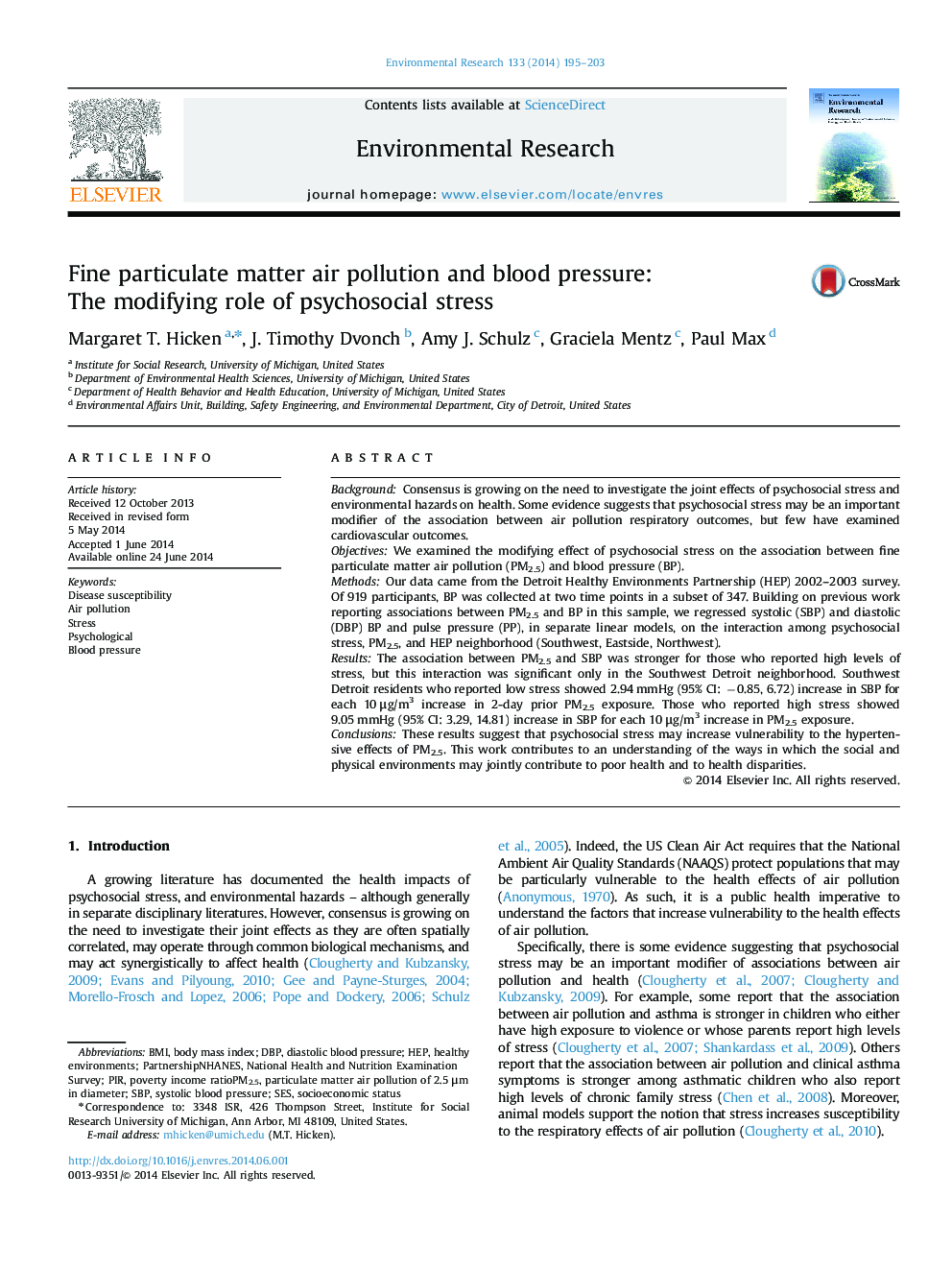| کد مقاله | کد نشریه | سال انتشار | مقاله انگلیسی | نسخه تمام متن |
|---|---|---|---|---|
| 4469712 | 1622568 | 2014 | 9 صفحه PDF | دانلود رایگان |
• Work suggests that psychosocial stress increases vulnerability to the effects of air pollution in certain contexts.
• We examined the modifying role of psychosocial stress on the hypertensive effects of PM2.5.
• In Southwest Detroit, high stress was associated with stronger PM2.5–BP associations.
BackgroundConsensus is growing on the need to investigate the joint effects of psychosocial stress and environmental hazards on health. Some evidence suggests that psychosocial stress may be an important modifier of the association between air pollution respiratory outcomes, but few have examined cardiovascular outcomes.ObjectivesWe examined the modifying effect of psychosocial stress on the association between fine particulate matter air pollution (PM2.5) and blood pressure (BP).MethodsOur data came from the Detroit Healthy Environments Partnership (HEP) 2002–2003 survey. Of 919 participants, BP was collected at two time points in a subset of 347. Building on previous work reporting associations between PM2.5 and BP in this sample, we regressed systolic (SBP) and diastolic (DBP) BP and pulse pressure (PP), in separate linear models, on the interaction among psychosocial stress, PM2.5, and HEP neighborhood (Southwest, Eastside, Northwest).ResultsThe association between PM2.5 and SBP was stronger for those who reported high levels of stress, but this interaction was significant only in the Southwest Detroit neighborhood. Southwest Detroit residents who reported low stress showed 2.94 mmHg (95% CI: −0.85, 6.72) increase in SBP for each 10 μg/m3 increase in 2-day prior PM2.5 exposure. Those who reported high stress showed 9.05 mmHg (95% CI: 3.29, 14.81) increase in SBP for each 10 μg/m3 increase in PM2.5 exposure.ConclusionsThese results suggest that psychosocial stress may increase vulnerability to the hypertensive effects of PM2.5. This work contributes to an understanding of the ways in which the social and physical environments may jointly contribute to poor health and to health disparities.
Journal: Environmental Research - Volume 133, August 2014, Pages 195–203
